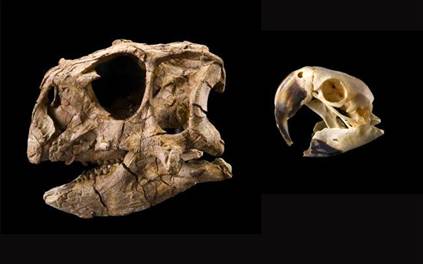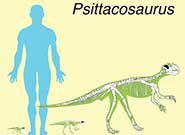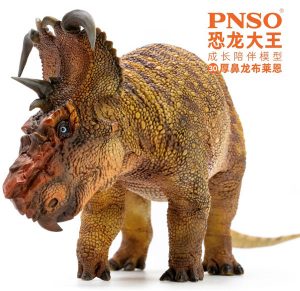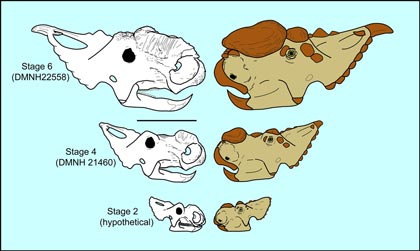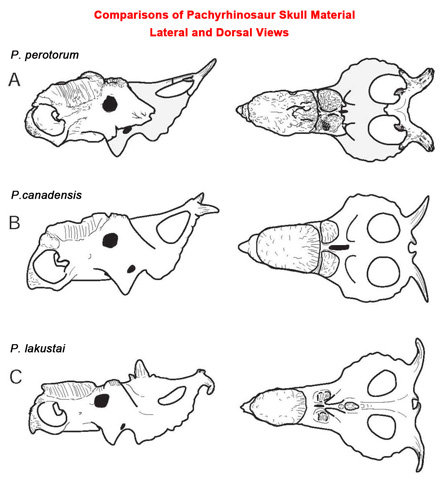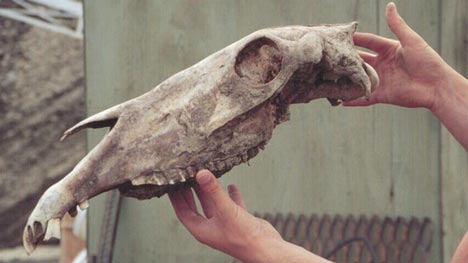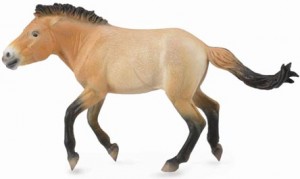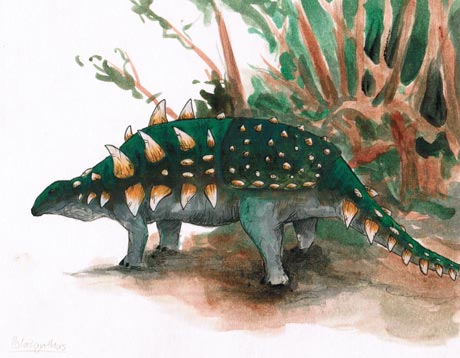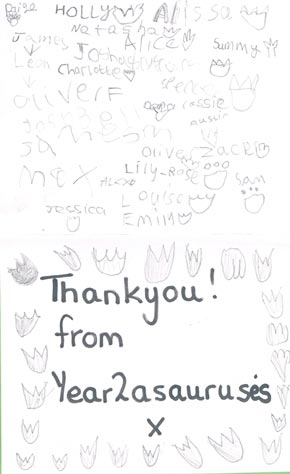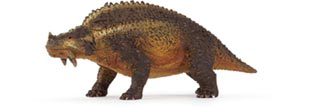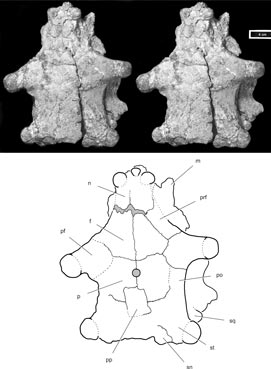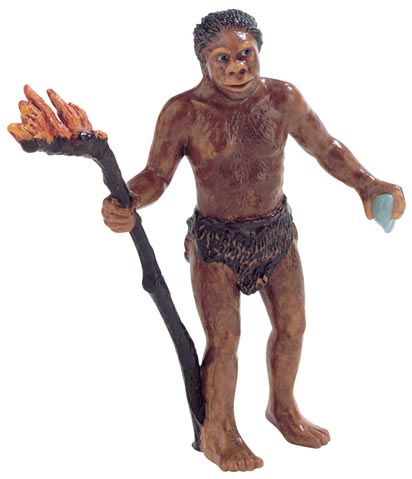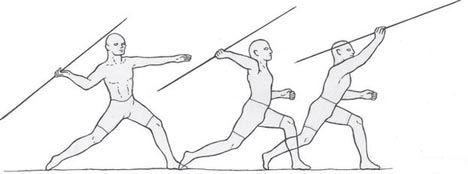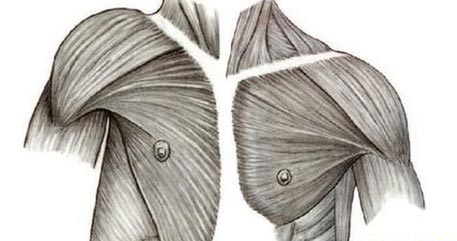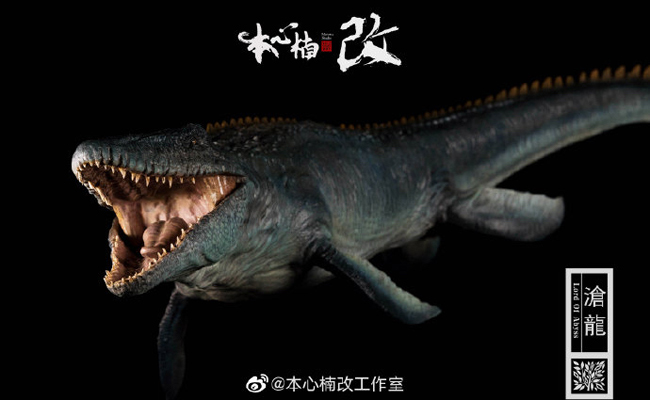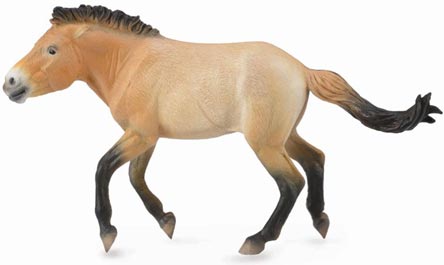Psittacosaurus Switched from Four Legs to Two as it Grew According to New Research
Scientists Explore how Psittacosaurus Changed as it Grew
A new study published in the scientific journal “Nature Communications” has shed light on how the dinosaur known as Psittacosaurus grew. It seems that when very young these animals adopted a quadrupedal stance and only as they matured did their back legs grow large enough for them to adopt a bipedal way of walking.
Psittacosaurus
The Psittacosaurus genus is perhaps the best represented genus of all the Dinosauria in the fossil record. Regarded as a transitional form between the ornithopods and the horned dinosaurs, this small type of dinosaur has more species attributed to the genus than any other dinosaur. Known from Cretaceous aged strata from China, Russia, Mongolia and Thailand this dinosaur can also lay claim to be the most extensively researched of all the dinosaurs. The great number of fossils, ranging from tiny, recently hatched individuals to mature adults some two metres long has provided palaeontologists with an extensive fossil resource to study.
An Illustration of a Mature Psittacosaurus (Human Figure for Scale)
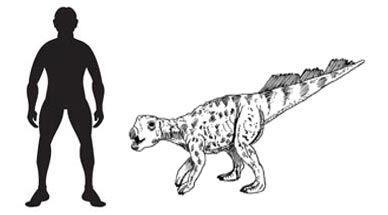 Picture credit Everything Dinosaur
Picture credit Everything Dinosaur
For models and replicas of Psittacosaurus (whilst stocks last) and other Early Cretaceous dinosaurs: CollectA Age of Dinosaurs Popular Figures.
The first remains of Psittacosaurus were found in 1922 by the American Museum of Natural History expedition to Outer Mongolia. This dinosaur was named and described by the famous American palaeontologist Henry Fairfield Osborn, who was also responsible for naming Tyrannosaurus rex. It was named after its square skull and distinctive large, beak that reminded scientists of a parrots beak. The name Psittacosaurus means “Parrot lizard”.
The Skull of a Species of Psittacosaurus (P. gobiensis) Compared to the Skull of an Extant Macaw
Picture credit: Mike Hettwer
Ontogenic studies (studies of how animals grew and changed as they matured), are extremely difficult. The paucity of the fossil record for each genus makes comparative studies extremely difficult. However, a team of scientists from the Institute of Vertebrate Palaeontology and Palaeoanthropology (IVPP – Beijing), Bristol University (England) and the University of Bonn (Germany), have used a combination of bio-mechanical studies and analysis of bone growth of Psittacosaurus fossils (histology) to determine that these herbivorous dinosaurs changed their walking postures as they grew and developed.
Dinosaurs Changed as they Grew
In essence, by studying the bones of Psittacosaurs that represented individuals at different ages the scientists were able to determine that these dinosaurs started out on all fours but as they got older they moved to a two-legged stance.
Great care was taken to produce cross-sections of fossilised bones, which when scanned using high power electron microscopes and CT equipment would provide information on how quickly the animals grew.
PhD student Qi Zhao (now on the staff of the IVPP), carried out a detailed and in depth study of how these dinosaurs grew, looking at the fossilised remains of babies, juveniles, immature individuals and fully grown adults. The student was given access to some extremely rare and delicate fossilised bones, including many that had come from remarkable excavations that indicate that these dinosaurs may have lived in burrows and young Psittacosaurs may have formed creches to protect themselves.
To read more about the discover of a dinosaur creche: Amazing Psittacosaurus fossil unearthed.
Commenting on his painstaking research work, the now qualified Dr Zhao stated:
“Some of the bones from baby Psittacosaurus were only a few millimetres across, so I had to handle them extremely carefully to be able to make useful bone sections. I also had to be sure to cause as little damage to these valuable specimens as possible.”
Special Permission from the IVPP
With special permission from the IVPP, the student sectioned two arm and two leg bones from sixteen individual dinosaurs, ranging in age from less than one year to ten years old, a fully grown adult animal. He did the intricate sectioning work in a special palaeo-histology laboratory in Bonn, Germany, with the assistance and support of Professor Martin Sander of Bonn University.
The youngest specimens, those representing individuals around twelve months in age had long arms and relatively short back legs. This suggest that these dinosaurs would have walked on all fours. Analysis of the bone sections indicated that the arm bones were growing at their fastest when these reptiles were between one and three years of age. From then on, the arm growth slowed and the hind legs showed a massive growth spurt, resulting in the hind limbs growing to nearly twice the length of the fore limbs. The hind legs took over the role of locomotion, the adults could have ambled about on all fours if they wanted to (facultative quadrupeds).
A Change in Locomotion as these Dinosaurs Matured
Picture credit: Institute of Vertebrate Palaeontology and Palaeoanthropology
Professor Xing Xu of the Beijing Institute, one of Dr Zhao’s thesis supervisors, stated:
“This is a remarkable study, the first of its kind, it shows how much information is locked in the bones of dinosaurs. We are delighted the study worked so well, and see many ways to use these new methods to understand even more about the astonishing lives of the dinosaurs.”
Professor Mike Benton of the University of Bristol, whom team members at Everything Dinosaur have met on several occasions, and Dr Zhao’s other PhD supervisor, added:
“These kinds of studies can also throw light on the evolution of a dinosaur like Psittacosaurus. Having four-legged babies and juveniles suggests that at some time in their ancestry, both juveniles and adults were also four-legged, and Psittacosaurus and dinosaurs in general became secondarily bipedal.”
Asking Intriguing Questions
This study does ask a number of intriguing questions. Psittacosaurus is regarded as a basal member of the Marginocephalia, a group of ornithischian dinosaurs that would give rise to the pachycephalosaurs and the ceratopsians. Many of the early horned dinosaurs (dinosaurs that were ancestral to giants such as Styracosaurus and Triceratops), were lithe, agile, bipedal dinosaurs, animals like Archaeoceratops and Liaoceratops.
It was only as larger genera evolved that these animals became quadrupeds. If Psittacosaurus evolved from a type of ornithopod then it is worth noting that ornithopods such as iguanodonts suggest that these animals as youngsters were bipedal, as they matured, they adopted a four-footed stance, the opposite of what is being seen with the psittacosaur fossil material.
The exact taxonomic relationship between Early Cretaceous ornithischian dinosaurs remains unclear, perhaps fossil material ascribed to the Barremian faunal stage of the Early Cretaceous and believed to represent a new genus of iguanodontid with some advanced skull characteristics could provide further clues.


